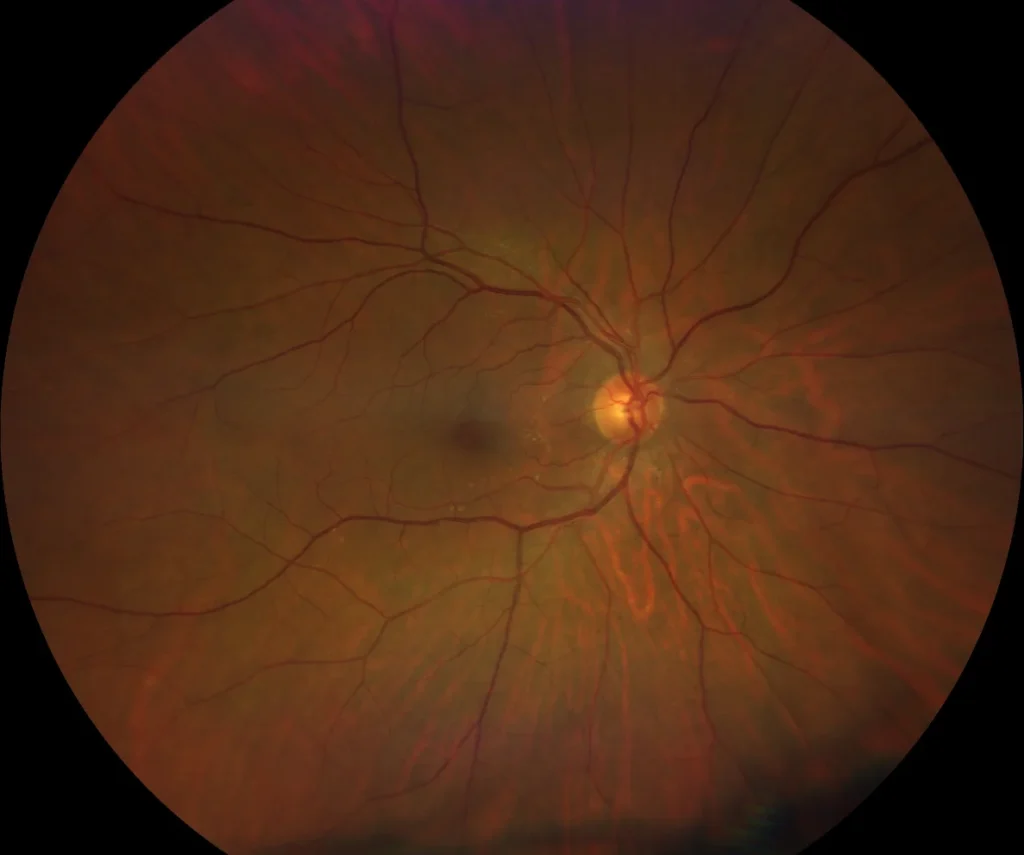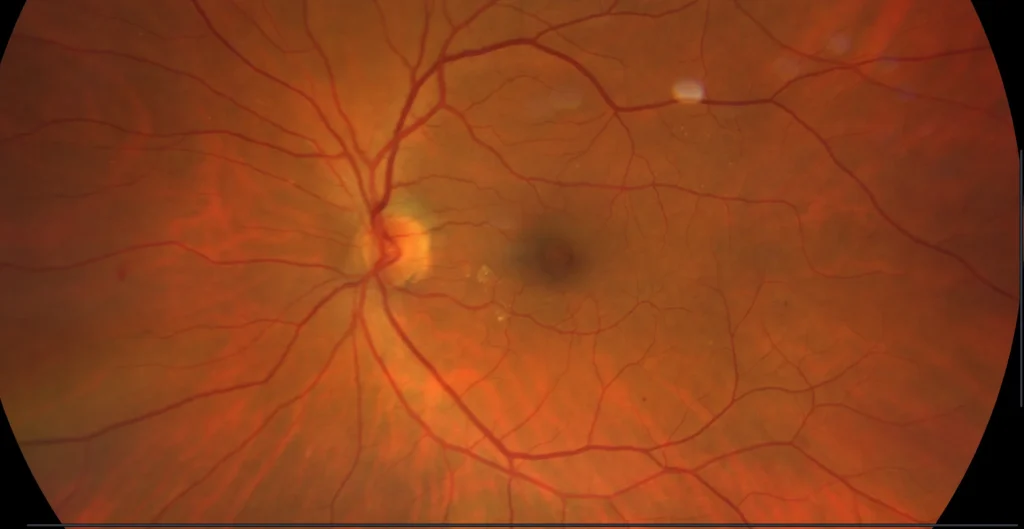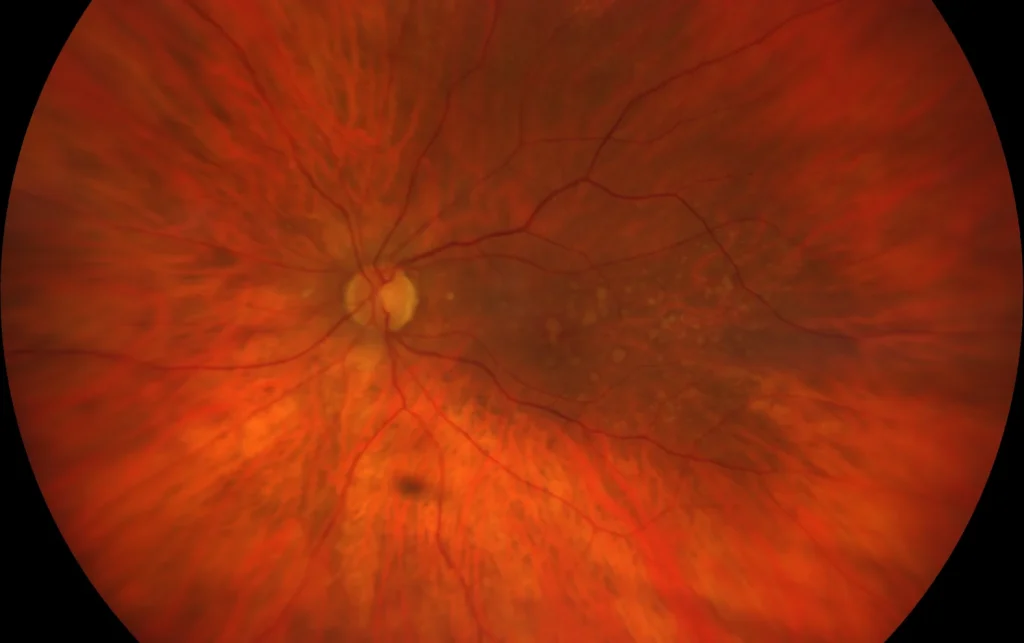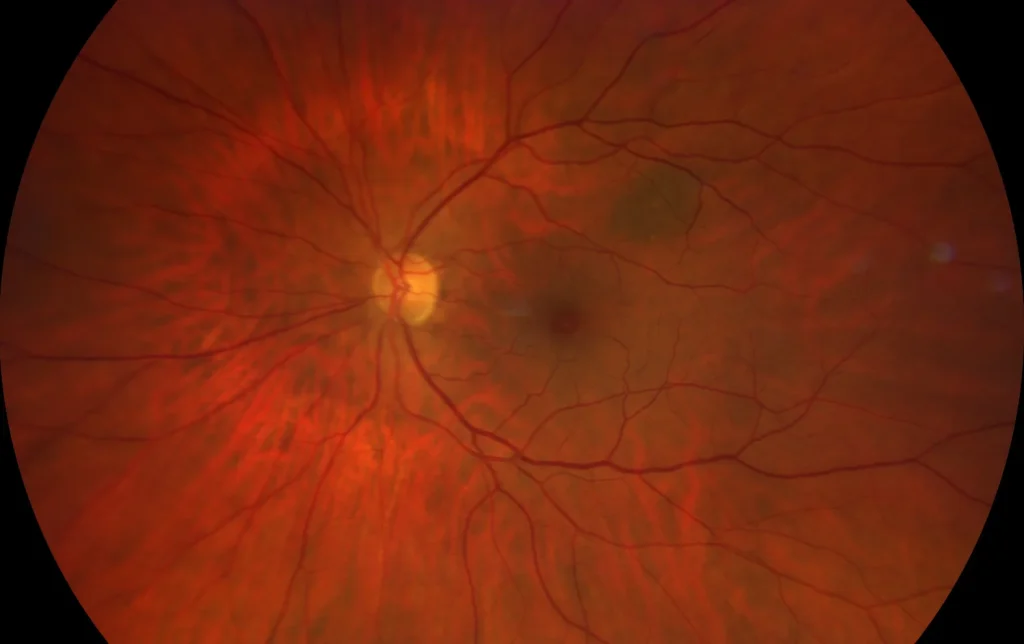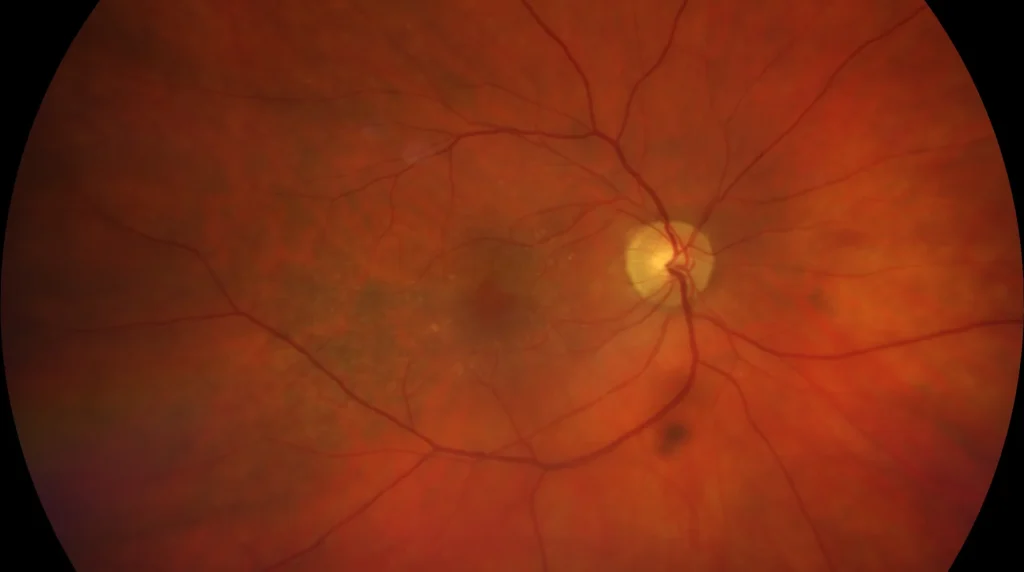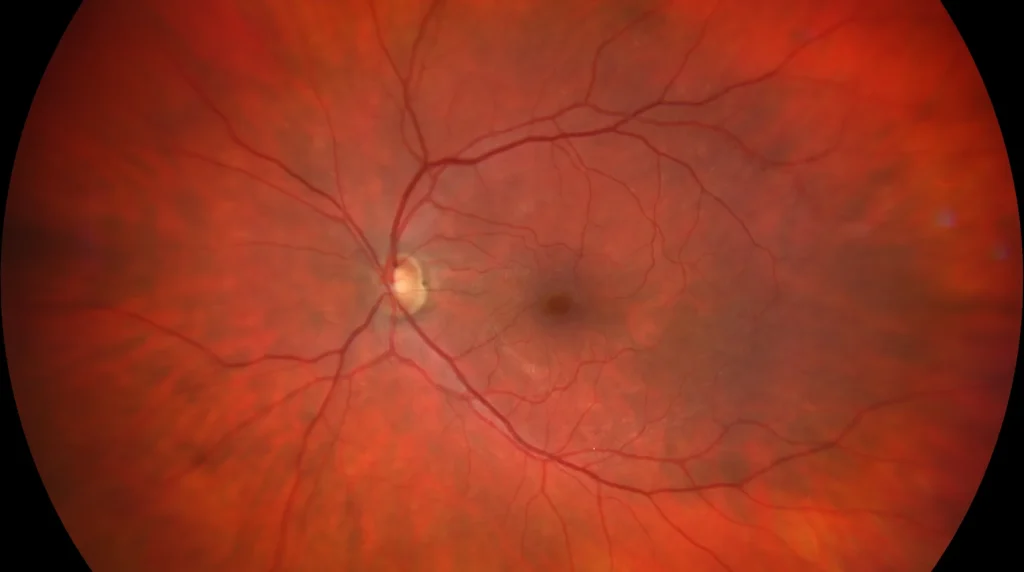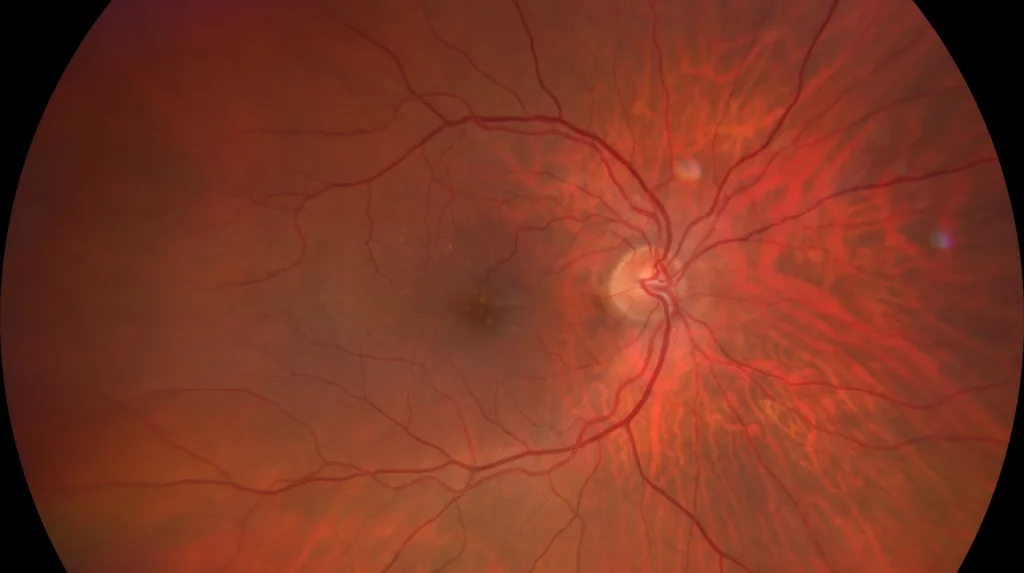Sección: Vitreomacular Interface Pathology
Idiopathic macular hole (stage 3)
This is a discontinuity of the foveal area secondary to vitreomacular traction and, subsequently, to progressive tangential traction. In this case, th
Idiopathic macular hole (stage Ib)
In stage Ib macular hole there is a break in continuity that occupies the entire thickness of the fovea, associated with vitreomacular traction. Patie
Idiopathic macular hole
An idiopathic stage I macular hole is usually asymptomatic, although it sometimes causes visual symptoms (metamorphopsia) as in the case described. In
Idiopathic macular hole
In stage Ia macular hole there is vitreofoveal traction, which causes a loss of foveal depression and pseudocysts form in the inner retina. The outer
Laminar hole
Lamellar macular hole is a vitreoretinal disorder characterized by an irregular foveal contour, a tear in the inner layers, dehiscence of the inner re
Laminar hole
Lamellar macular hole is a vitreoretinal disorder characterized by an irregular foveal contour and a break in the inner layers of the fovea. This path
Severe vitreomacular traction
Vitreomacular traction. Vitreomacular traction is considered when the posterior hyaloid deforms the macular area causing a distortion of the structur
Mild vitreomacular traction
Mild vitreomacular traction. In the physiological process of posterior vitreous detachment, certain cases generate an increased adhesion between the
Focal vitreomacular traction (VMT).
Focal vitreomacular traction (VMT). Vitreomacular adhesions may resolve spontaneously or evolve into VMT when an anatomical distortion of the macular

